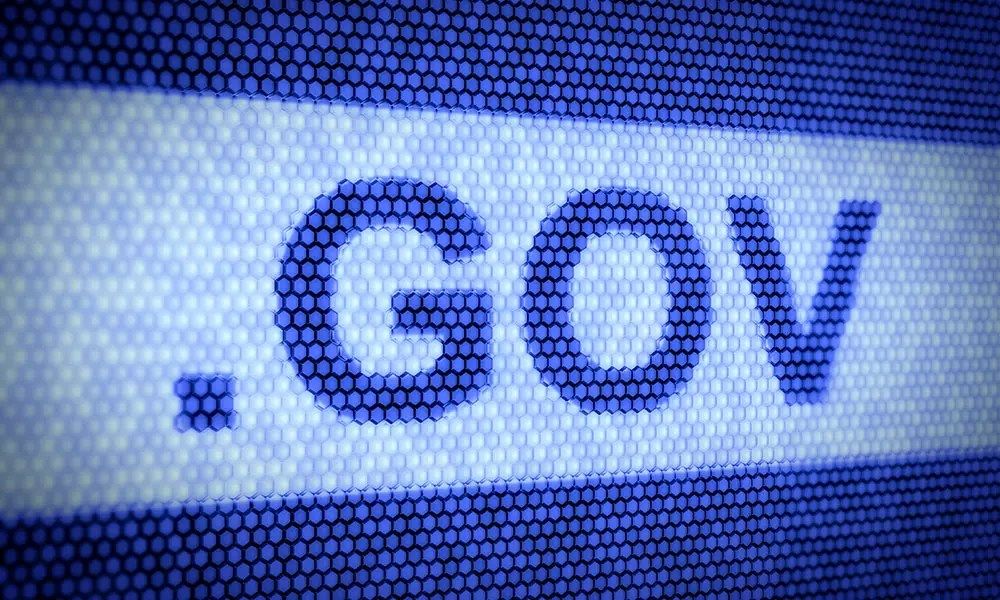Why the Government of Tomorrow is Also a Data Organisation

Nowadays, every organisation is a data organisation. This not only applies to commercial organisations, but also to governments. Governments at every level – local, regional, national and supranational – should take a different approach to organise their activities.
However, becoming a data organisation is not an easy feat. It requires governments to rethink all their processes and all citizen touchpoints. Even though governments do not have such fierce competition as organisations do, they too have to adopt technologies such as predictive analytics, blockchain and AI to improve their services.
As part of my new book – The Organisation of Tomorrow – I have developed a model that can help organisations become a data organisation. The D2 + A2 Model helps organisations to datafy their processes, distribute their data via the cloud or using distributed ledger technologies, analyse their data using descriptive or predictive analytics to sense and seize opportunities and automate their decision-making and processes using AI. It is a simple four-step roadmap for enterprises and governments to transform their organisation.
The D2 + A2 Model for Governments
Governments are a collection of processes built on top of each other over long periods of times. As a result, almost all governments have bureaucratic processes where technology can have a dramatic impact. However, transforming government processes is difficult.
Often, expensive IT systems fail for various reasons. They are often tied to political decisions, there are limited consequences for failure, there is a poor understanding of the technology and personal ambitions result in too ambitious projects. As a result, incorporating advanced IT within government services is difficult.
Therefore, as with any digital transformation, also governments should adopt a more agile approach of building small, testing and scaling their IT projects. The D2 + A2 Model can help here. First, let’s see how government processes can be datafied, data can be distributed and analysed, and processes can be automated.
1. Datafying Government Processes
Transforming a government into a data organisation starts with collecting data. Hence, the first step in any digital transformation project is to datafy government processes.
Datafication is the process of making an organisation data-driven, by transforming social, offline, action into quantified data. It involves collecting (new) data from various sources and processes in what can be called Online to Offline (O2O); merging the online and offline world.
Datafying a government starts by making processes, workplaces, services, infrastructure and cities smart using countless sensors and IoT devices. This will make previously ‘invisible’ processes traceable so that they can be monitored, analysed and optimised.
For example, the city of Los Angeles is deploying a smart streetlight network. With 50.000 smart street lights operating in the city, the local government aims to improve the quality of life in Los Angeles. Currently, these street lights only tell the when they are no longer working but the objective is making them more advanced in the coming year. So that they can inform the government on CO2 levels, noise in the street and much more.
Another example is China, that is building a 161-kilometre-long smart road in Zhejiang province. The smart road will integrate safety features to support autonomous driving, have embedded solar panels to charge cars will driving and it stuffed with smart sensors to predict maintenance and monitor driving patterns. All these sensors collect vast amounts of data that will help the Chinese government optimise their infrastructure.
Two examples of how governments can adopt the Internet of Things to collect vast amounts of data. However, all this data has to be stored correctly for it to be useful.
2. Distributing Government Data
Once data is collected within every process and citizen touch point, it is, of course, important to store that data in order to use it. There are two ways of doing so. Ideally, the government of tomorrow will make use of a combination of these two technologies. First of all, a government can distribute data using distributed ledger technologies such as blockchain. This is especially relevant when dealing with external stakeholders such as citizens.
The Dutch government is experimenting a lot with using distributed ledger technologies in their transactions with citizens. They have created dozens of blockchain pilots to understand how technology can be used. For example, they have pilots running, ranging from creating autonomous IoT objects in public spaces to recording university degrees on a blockchain to offer welfare via a decentralised ledger. When distributing welfare, they can use smart contracts to make sure that money is spent on the right things, for example on the children’s sports activities instead of gambling or drinking.
However, a decentralised solution is only required when there is a trust issue (which generally happens when individuals, organisations and things want to collaborate across organisational borders or between individuals) and when a transaction is taking place. In other occasions, distributed ledger technology is not the required technology. In that case, a government can better use cloud computing technology. The cloud can be especially useful to store, analyse, visualise and share data within an organisation, where it does not matter that there is a centralised database.
As such, the Belgian road authority, Agentschap Wegen & Verkeer (AWV), has adopted a cloud computing strategy to maintain the Flemish road infrastructure. The AWV manages 6970 kilometres of roads and 7668 kilometres of cycle lanes. A team of 250 road inspectors has to work together to ensure the safety of the road users. They were using in-house servers which often proved unreliable. Consequently, at times they had to use pen and paper instead of the app, as it was not unavailable. After switching to AWS, the AWV was able to reduce costs, speed development and reduce infrastructure management time, while ensuring constant availability.
3. Analysing Government Processes
After collecting data in every government process and citizen touchpoint and storing the data in a distributed way, it is time to analyse that data using advanced analytics. It is required to understand what is going on and how to respond to changes in the context of a government. Within the government of tomorrow, information has to be available to those capable of making sense of it and those facing the citizens. Few management layers and a better understanding of the context can greatly reduce bureaucracy within a government.
Governments that apply business analytics tools will be better able to understand their city or country as well as their ambiguous and uncertain environment. It will improve the ability to make the right decisions at the right moment and as such seize the right opportunities to create competitive advantage.
That is why the State of Victoria in Australia has launched the Victorian Centre for Data Insights. The objective of the centre is to make better decisions using the vast amounts of data the government collects – from education and health data to data on business, communities, infrastructure and the environment. Victoria has even appointed a Chief Data Officer – Julian Hebden – to enable better use of data across the government by sharing data across traditional government silos.
Also, the government of Chicago is focusing on analytics to enable a safer environment for its citizens. They developed an analytical model to improve its Park District’s regular beach water quality inspection process. The objective of the model is to predict which beaches will have to be closed due to bad water conditions. Such predictive models offer a cost-effective means to easily address water contamination issues.
4. Automating Government Processes
The final step in transforming your government into a data organisation is to automate government processes and augment the citizen touchpoints with artificial intelligence or smart contracts. Artificial intelligence will become especially valuable if you have completed the first three steps.
To start automating government processes, the right way would be to do so in small steps. It is impossible to build a fully automated business from scratch due to the complexity involved with artificial intelligence. If executed correctly, there are vast opportunities for governments.
The UK Department for Work and Pensions (DWP) is turning to artificial intelligence to automate claims processing and fight fraud within their department. The department uses AI to identify corruption of the benefit and welfare programme and with that, protect taxpayers’ money. The algorithms are much better and faster at detecting possible issues than human investigators. Thanks to pattern recognition models and outlier detection, the department can quickly discover potential fraudulent transactions. In addition, AI also analyses social media accounts to discover inconsistencies in the stories told by people who claim benefits.
Finally, the Dubai International Financial Centre (DIFC) Courts is working on a decentralised platform to enable different courts to share data and information in a decentralised manner. The objective is to automate manual tasks such as document duplication and encode contractual terms and regulations in smart contracts. This project is part of Dubai’s objective to create the world’s first government run on a blockchain.
Final Thoughts
Across the world, governments are experimenting with emerging information technologies to upgrade government services. These eight examples of innovative governments that datafy their cities, distribute and analyse their data and automate their processes show that there is plenty to win for governments.
For any government department, the best approach to digitally transform government services is to have a clear understanding of the technology, create a multi-disciplinary team to start small pilot projects and to scale only when these pilot projects are a success. However, if governments follow the four-step approach of collecting data, distributing it correctly, analysing it accordingly to automate their processes, they have a big chance of success to improve their government services.
Image: dencg/Shutterstock





